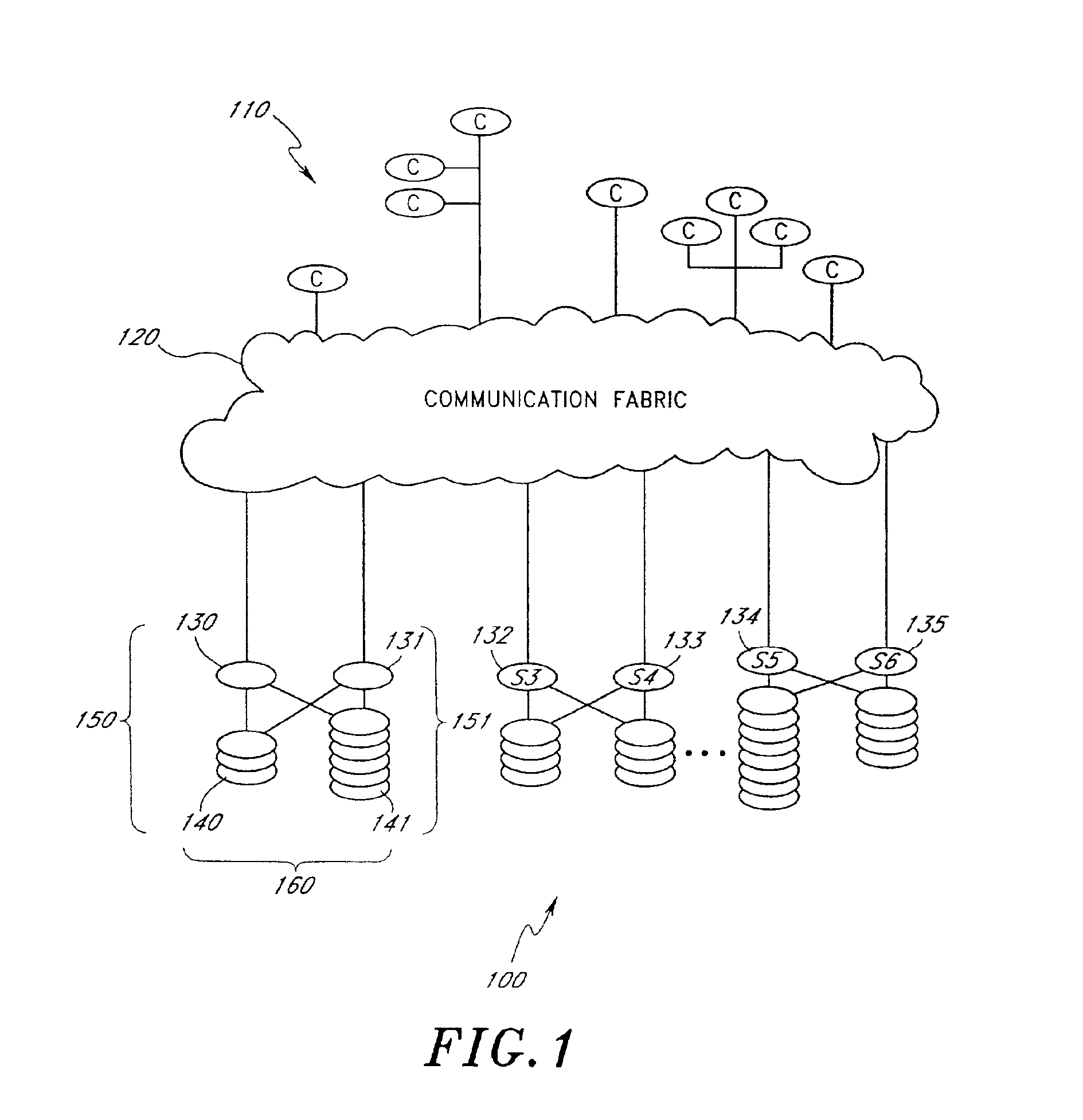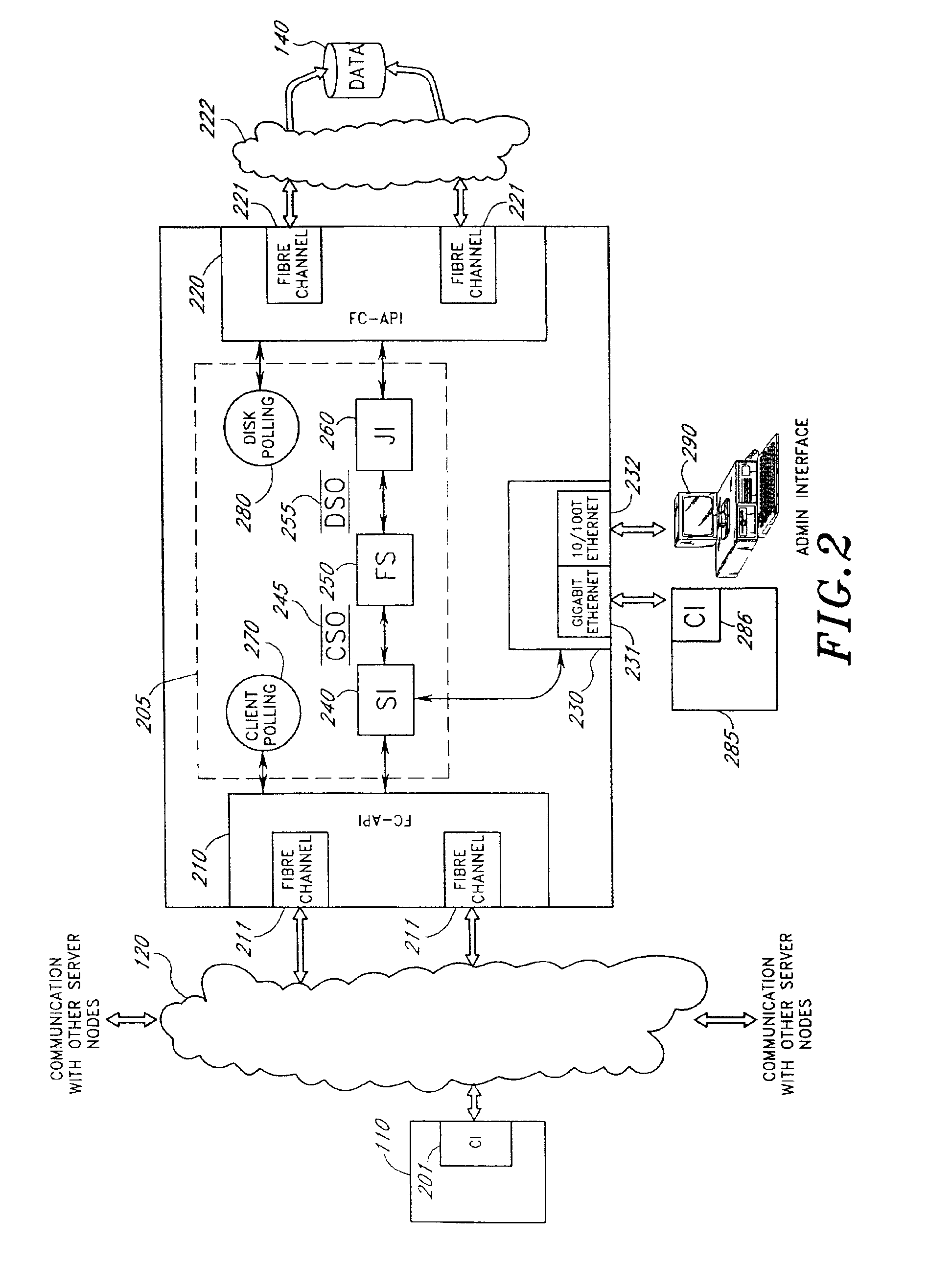Demands for increases in storage capacity that are transparent to the users or for hardware upgrades that lack conformity with existing
system hardware cannot be accommodated, especially while the system is in use.
In addition, such systems commonly suffer from the problem of data fragmentation, and they lack the flexibility necessary to intelligently optimize use of their storage resources.
The manner of data distribution and
data redundancy within the
disk array impacts the performance and
usability of the storage system and may result in substantial tradeoffs between performance, reliability, and flexibility.
RAID arrays can reconstruct information stored in a particular data stripe using the parity information, however, this configuration imposes the requirement that records span across all drives in the array resulting in a small stripe size relative to the stored
record size.
The aforementioned
RAID architecture suffers from a number of drawbacks that limit its flexibility and
scalability for use in reliable storage systems.
One problem with existing RAID systems is that the
data striping is designed to be used in conjunction with disks of the same size.
Each stripe occupies a fixed amount of
disk space and the total number of stripes allowed in the RAID system is limited by the capacity of the smallest disk in the array.
Any additional space that may be present on drives having a capacity larger than the smallest drive goes unused as the RAID system lacks the ability to use the additional space.
This further presents a problem in upgrading the storage capacity of the RAID system, as all of the drives in the array must be replaced with larger capacity drives if additional storage space is desired.
Therefore, existing RAID systems are inflexible in terms of their drive composition, increasing the cost and inconvenience to maintain and
upgrade the storage system.
A further problem with conventional RAID arrays resides in the rigid organization of data on the disks of the RAID array.
As previously described, this organization typically does not use available
disk space in an efficient manner.
Data storage in this manner is typically inefficient as regions or gaps of
disk space may go unused due to the file organization restrictions.
Furthermore, the fixed
block size of the RAID array is not able to distinguish between large files, which benefit from larger
block size, and smaller files, which benefit from smaller
block size for more efficient storage and reduced wasted space.
Although conventional RAID configurations are characterized as being fault-tolerant, this capability is typically limited to single disk failures.
Should more than one (or two) disk fail or become inoperable within the RAID array before it can be replaced or repaired there is the potential for
data loss.
This problem is further exacerbated by the lack of ability of the RAID system to flexibly redistribute data to other disk areas to compensate for drive faults.
Thus, when one drive becomes inoperable within the array, the likelihood of
data loss increases significantly until the drive is replaced resulting in increased maintenance and monitoring requirements when using conventional RAID systems.
This often means that the such load balancing can be slow to react, difficult to optimize for a particular
server, and difficult to scale as the available resources expand or contract.
In addition, conventional load balancing typically is limited to balancing
processing and communications activity between servers only.
 Login to View More
Login to View More  Login to View More
Login to View More 


